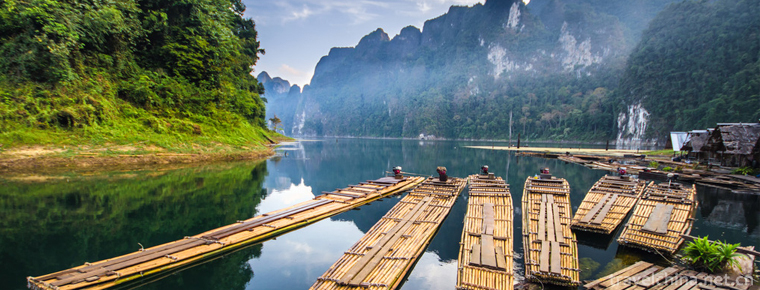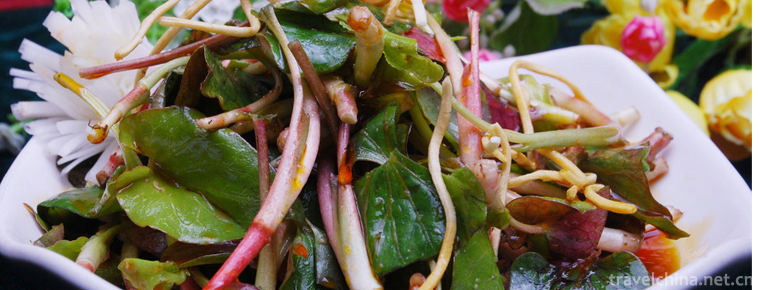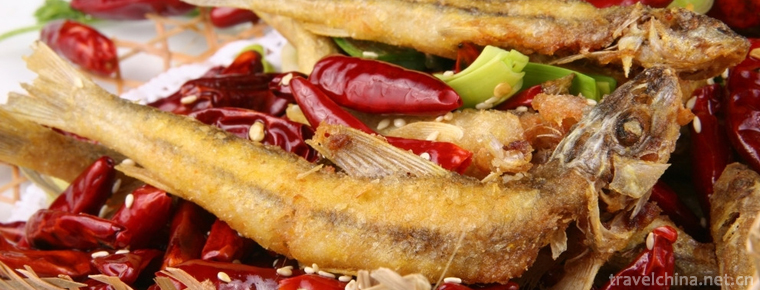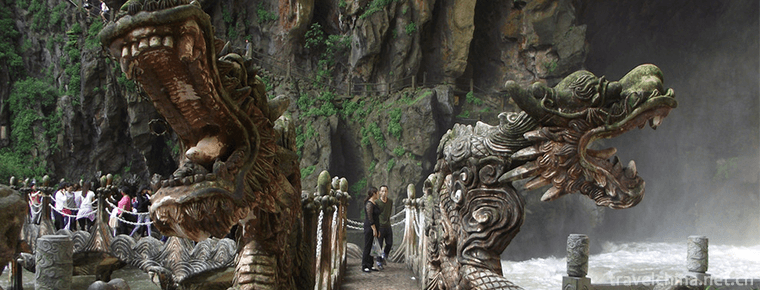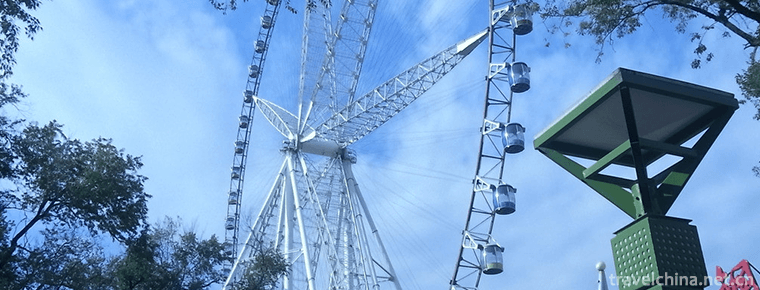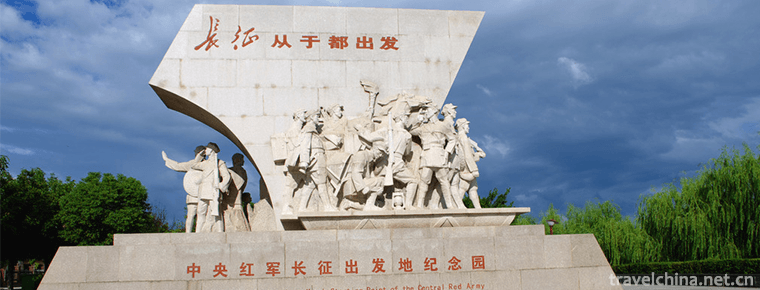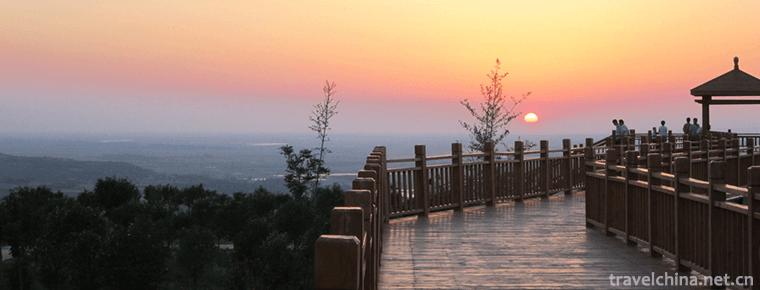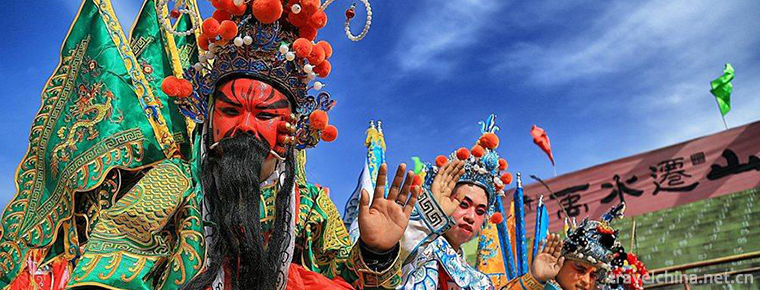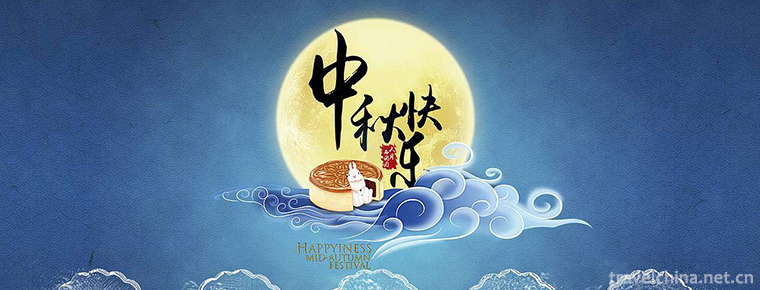Mongolian Medicine
Mongolian Medicine
Mongolian medicine is mainly moxibustion, and is good at using fire needles. Fire needle is a method of treating diseases by rapidly puncturing the acupoints with red-hot needle tips. This method has the function of warming meridians and dispersing cold, dredging meridians and activating collaterals, so it can be used in clinical treatment of deficiency, cold and swelling. Mongolian medicine is mainly botanical medicine. The ancients summarized the medicinal properties of Mongolian medicine as eight kinds: heavy, oil, cold, blunt, light, rough, hot and sharp. There are three modern classification methods of Mongolian medicine, namely, according to the medicinal parts, families or medicinal effects. With the introduction of Tibetan "Four Medical Codes" into Mongolia, Tibetan medicine has played a certain role in promoting the development of Mongolian medicine, while some Tibetan medicine has also been used by Mongolian medicine.
On June 7, 2008, Mongolian medicine was approved by the State Council to be included in the second batch of national intangible cultural heritage list.
Ethnic situation
Mongolians in China mainly live in Mongolian Autonomous Prefectures in Inner Mongolia Autonomous Region, Liaoning Province and Gansu Province. They use Mongolian and have relatively free religious beliefs.
Overview of Medicine
Brief History of Medicine: After the unification of Mongolian ministries, Mongolian medicine absorbed the basic theory and medical experience of Tibetan medicine, Chinese medicine and ancient Indian medicine, compiled a large number of Mongolian medicine works, and created unique formulation and medication methods in the region. After 1949, Inner Mongolia Medical College established Mongolian medicine specialty, and established Mongolian Medical College, specializing in training senior personnel of Mongolian medicine.
Medical theory: hexabasic theory (Hey, Sheila, Badagan, Blood, Sherau, Myxomycetes). The essence of disease can be divided into cold and heat. The intrinsic condition of the disease itself refers to three seven elements, namely internal cause, and the pathogenic factor refers to external factor, namely external edge.
Diagnostic methods: Question, observation and excision are the three main diagnostic methods.
Relevant works: Mongolian Pharmacy, Drinking Diet Synopsis.
History of development
Mongolian medicine is one of the cultural heritage of Mongolia, and also an important part of traditional Chinese medicine. It is gradually formed and developed by Mongolian people in long-term medical practice. It absorbed the essence of Tibetan medicine, Han Medicine and ancient India medical theory, and gradually formed a national traditional medicine with distinctive national characteristics, regional characteristics, unique theoretical system and clinical characteristics.
Since ancient times, the Mongolian people have lived a nomadic life. In the struggle against drought, cold, humidity, snow and other natural conditions, they have accumulated a lot of medical knowledge and methods suitable for the environment, mode of production, living habits and geographical and climatic characteristics at that time. Mongolian people mainly eat meat and dairy food of cattle, sheep, horses and other animals, so they have a lot of knowledge about the medical function of these animal products, and dietary therapy plays an important role in Mongolian medicine. Because of its cold and humid habitat, moxibustion therapy is also the early commonly used treatment method of northern Mongolian, and because of its nationalities'long-term employment in the vast grassland, often. Because of war wounds, falls and fractures, bone-setting, brain-setting and cauterization therapy are also important contents of early Mongolian medicine.
At the beginning of the 13th century, Genghis Khan unified the Mongolian tribes and established the Mongolian Empire. Mongolian society entered a new stage of historical development. With the contacts with various nationalities in China, especially the Han and Tibetan nationalities, and with India, Arab and European countries, Mongolian economy and culture developed and Mongolian characters were created. Traditional Mongolian medicine therapy and clinical medication, theory, practice and other aspects have been further developed and improved. The knowledge of orthopaedics, trauma treatment, horse milk therapy and pharmacology in Mongolian medicine has developed greatly. In the History of the Yuan Dynasty, it is recorded that rhubarb was used to treat the plague in the Mongolian Army in 1226. Cistanche deserticola, a special medicinal herb in Inner Mongolia, has been recorded in books such as Dietary Synopsis and Compendium of Materia Medica.
In the 14th century, the Mongolian translator Sarabsange translated the ancient Indian masterpiece The King's Sutra of the Best of Golden Light into Mongolian. Following this, some theories of ancient Indian medicine were first disseminated in Mongolia. In 1576, the great classic of Tibetan medicine "Four Medical Classics" was introduced to Mongolia. The Indian Buddhist masterpiece "Danjul Sutra" was translated into Mongolian at the end of the 17th century, which played an important role in the development of Mongolian medicine. On the basis of traditional medical practice, Mongolian medicine has absorbed the theories of "Heyi", "Xie Ri", "Badagan" and "Seven Elements" based on the theories of Yin-Yang and Five Elements (Five Elements) of Tibetan medicine and ancient Indian medicine, as well as the knowledge of traditional Chinese medicine, and innovatively reformed and developed them in combination with the characteristics of Mongolia and folk therapy.
In the early Qing Dynasty, the traditional Mongolian medicine bone injuries developed to a new level. For example, the Mongolian doctor Churchimergen is often able to treat dislocations and fractures of joints where limbs cannot be stretched and flexed. In The Four Manna Books, Ihibarakil elaborated the theory and practical operation contents of "trauma therapy", "bone injury therapy", "dislocation reduction" and "brain shock therapy" in detail by combining Mongolian orthopaedic surgery and creative medical experience with theory, which made great progress in the theory and technology of Mongolian medical surgery.
In the field of pharmacy, Mongolian physicians created unique dispensing and medication methods suitable for the region, and absorbed the pharmacological theory knowledge of the brothers of Han and Tibet, so as to make their pharmacological theory more perfect. The two books of the 17th century, Medical Injury Eradication Pain Manna Formula and the Fifth Five-Year Pharmaceutical Prescription Collection, reflect the common cold side in Mongolia. The book Baijing Pharmaceutical Guide for Drug Recognition, written by Ishibarajil, is a relatively rich Mongolian pharmacy book, which contains 801 kinds of drugs and includes medicinal bath, mineral spring therapy and other contents. The Mongolian Pharmaceutical Code is a relatively complete Mongolian pharmacy classic book, with a total of collections. The Golden Chamber of Mongolian Medicine is a relatively complete collection of prescriptions of Mongolian medicine, containing 200 kinds of prescriptions in clinical departments such as external medicine, gynecology, children, five senses, fever and infectious diseases.
In the diagnosis of diseases, diagnostics based on inquiry, observation and touch has been formed and gradually divided into branches. The five diagnostic methods mentioned in "Outline of Pulse Diagnosis" and "Manlu Spring" are "pulse cutting, urine examination, inquiry, experience-based diagnosis, and selective diagnosis". The trauma and dislocation diagnostic methods in "Bailu Medical Method from the New" by Ehrlich are the products of the combination of traditional diagnostic methods and theories. "Bailu Medical Law from the New" divides clinical diseases into 13 major disciplines, such as internal medicine, fever and infectious diseases.
After the founding of New China, the Party and the people attached great importance to the inheritance and development of Mongolian medicine, and translated and collated many Mongolian medical classics. Nowadays, Mongolian medicine has made extensive use of natural science achievements and modern diagnostic methods, constantly enriching and innovating its traditional diagnostic methods, becoming a brand-new national medicine, enriching and developing traditional Chinese medicine, and making due contributions to improving human health.
Sebsu Therapy: The difficulty of inheritance of Mongolian medicine was submitted by Delger on Wednesday, 12/25/2013-14:22 Wen. Photography/our reporter Chana Sebsu Therapy is a traditional Mongolian medicine therapy handed down from the Mongol and Yuan Dynasties. It played a great role in Genghis Khan's iron riding campaign. It is one of the important skills of Mongolian medicine to slaughter livestock on the spot, treat human diseases with its viscera and skin, and adapt to the nomadic life of Mongolian nationality. However, with the change of people's lifestyle and medical environment, this treatment is facing the crisis of extinction. Dalengtai, an old Mongolian doctor, is a non-hereditary inheritor of Sebsu therapy at the autonomous region level. Now only two or three patients are treated with this therapy a year. It is difficult for young Mongolian doctors to learn this traditional treatment method from school, but in the real medical environment.
Related policies
The Inner Mongolia Autonomous Region Government recently issued a document on further supporting the development of traditional medicine to ensure the implementation of various inclined policies to promote the development of Mongolian medicine.
Prior to this, Inner Mongolia has issued five regulations and plans on the revitalization of Mongolian medicine, and put forward a series of favorable policies to promote the development of Mongolian medicine. Recently, the "Notice on Promoting the Implementation of the Inclination Policy of Mongolian Traditional Chinese Medicine Hospital" was issued to ensure the implementation of the Inclination Policy of Mongolian Traditional Chinese Medicine Hospital.
According to the circular, the starting line of medical reimbursement in Mongolian medical institutions has been reduced by 20% to 50%, and the reimbursement ratio has been increased by 15% to 20% on the original basis, with a maximum of no more than 95%. Acupuncture and moxibustion, bone-setting, medicine bath, bloodletting and other Mongolian medicine characteristics of diagnosis and treatment technology, Mongolian medicine and hospital preparations in Mongolian hospitals are included in the basic medical insurance payment scope, encouraging common diseases, frequently-occurring diseases and chronic diseases to be treated by traditional methods.
It is understood that at present two kinds of Mongolian medicine are listed in the new edition of the national essential medicine catalogue. In Inner Mongolia, all Mongolian medicines can be used as essential medicines.
The circular proposed that Inner Mongolia should establish a green channel for the introduction of Mongolian traditional Chinese medicine talents, cancel the restriction on the proportion of enrollment and relax the recruitment conditions such as educational background and age. At the same time, we will effectively implement the policy of high salary for the initial recruitment of Mongolian medical personnel at the grass-roots level, and stabilize and expand the Mongolian medical personnel.
Mongolian medicine is the precious cultural heritage of Mongolian people, and it is also an important part of Chinese traditional medicine. Mongolian medicine has a unique curative effect in the treatment of cold, bone injury, cardiovascular and cerebrovascular diseases.

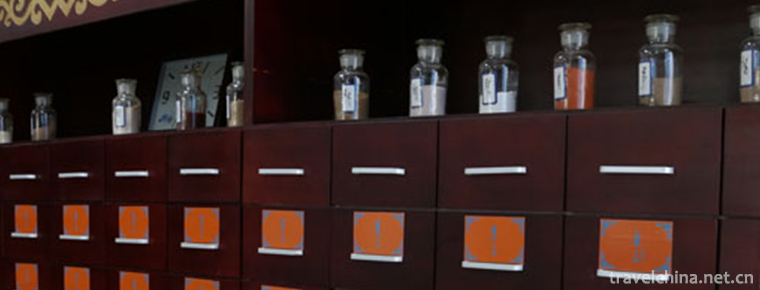
-
Lijiang River
The Lijiang River, a branch of the upper reaches of the Guijiang River.
Views: 84 Time 2018-10-12 -
The Bund
The Bund, located on the Huangpu river bank in Huangpu District, Shanghai.
Views: 160 Time 2018-10-12 -
Houttuynia cordata Thunbherba houttuyniae
Houttuynia cordata Thunb. is a kind of herbal medicine collected in the Chinese Pharmacopoeia.
Views: 239 Time 2018-10-12 -
Dali arched fish
Dali aToxoplasmus dali, commonly known as fine-scaled fish.
Views: 234 Time 2018-10-17 -
Longgong Scenic Area of Anshun City
Located in the southern suburb of Anshun City, Longgong Palace is adjacent to Huangguoshu Scenic Area and 116 kilometers away from Guiyang City, the provincial capital..
Views: 129 Time 2018-12-12 -
Harbin Amusement Park
Harbin amusement park is located at the junction of the outer Road area and Nangang District. It was founded in 1958. Originally known as Harbin Cultural Park, it covers an area of 22.8 hectares..
Views: 108 Time 2019-01-13 -
Hongjundu Xiwudang Mountain Scenic Area
Hongjundu Xiwudang Mountain Scenic Area is the starting point of the Long March of the Four Red Armies, the memorial site of the Campaign of Strong Crossing Jialingjiang River, the national patriotic.
Views: 81 Time 2019-01-16 -
Tongguan Yellow River Scenic Area
Tongguan Yellow River Scenic Spot is located at the famous ancient military pass-Tongguan ancient city, 140 kilometers away from Xi'an, only 20 kilometers away from Huashan.
Views: 80 Time 2019-02-22 -
Folk fire Min Jian She Huo
Folk society fire is a kind of folk entertainment popular in China during the Spring Festival. It is widely spread in Shaanxi, Shanxi, Hebei, Henan, Liaoning and other provinces. On May 20, 2006, Folk.
Views: 155 Time 2019-06-05 -
Zao Bang
Zaobao is one of the traditional local operas in Shandong Province. It is mainly popular in Heze, Yuncheng, Liangshan, Juye, Juye, Juancheng and Dingtao. It developed under the influence of local lang.
Views: 235 Time 2019-07-16 -
Mid Autumn Festival
Mid-Autumn Festival, also known as Moon Eve, Autumn Festival, Mid-Autumn Festival, August Festival, August Meeting, Moon Pursuit Festival, Playing Moon Festival, Moonworship Festival, Daughter's Festi.
Views: 129 Time 2019-08-03 -
Deyang post and Telecommunications
By the end of 2018, the total telecom business of Deyang City has reached 12.95 billion yuan, with 701000 fixed telephone users and 3.998 million mobile phone users. The total length of optical cable at the end of the year is 138000 skin kilometers..
Views: 309 Time 2020-12-14
